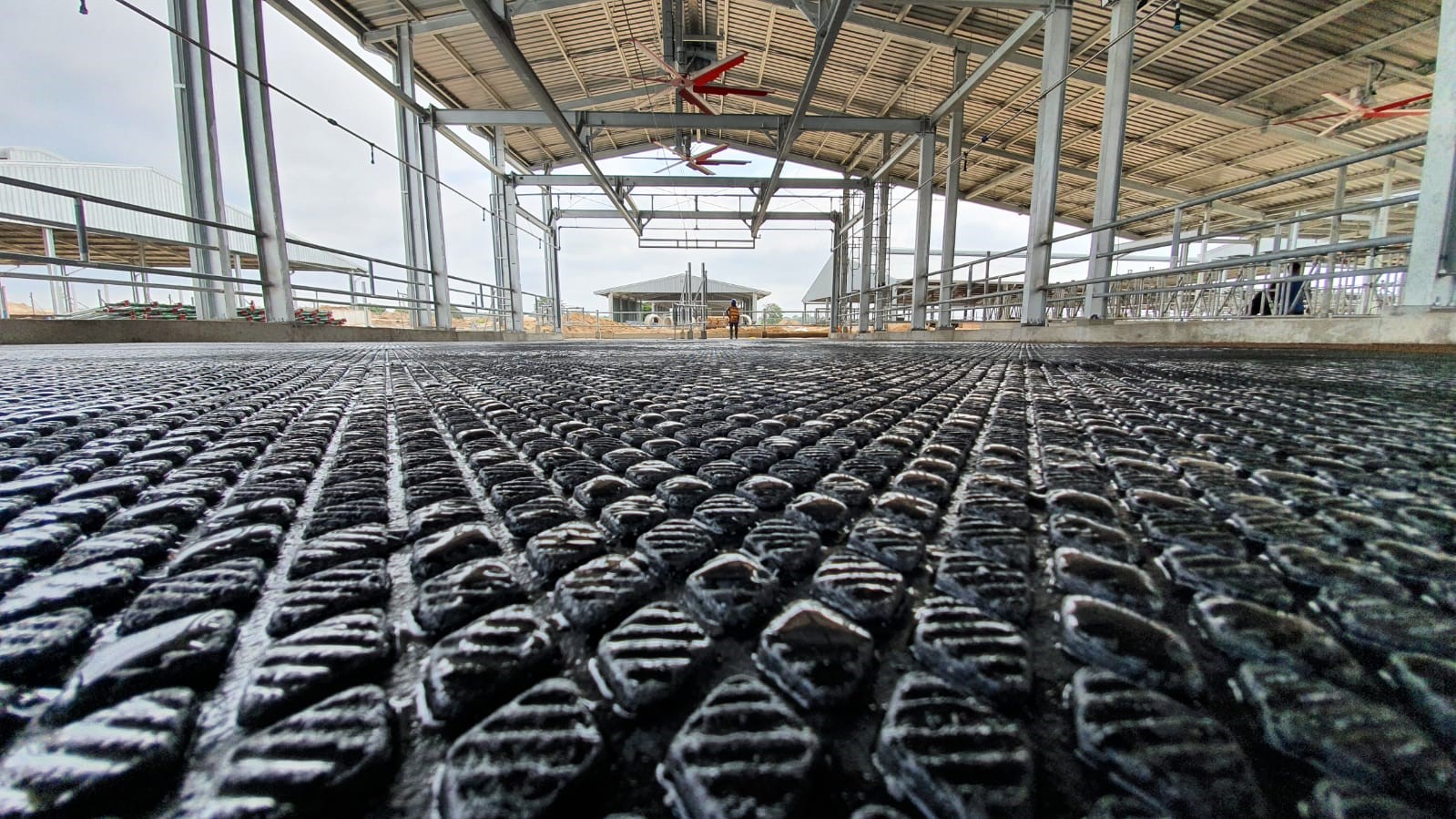“Modern dairy confinement facilities are housing cows for much if not all of their entire lives. Concrete is the prevalent flooring surface in dairy barns and shelters at this time. Concrete must be properly grooved or patterned to provide confident footing for cows. Ragged grooved edges and rough finished surfaces are abrasive to cows’ hooves and must be avoided. Even a properly finished and grooved concrete surface causes excessive stress on cows’ feet and legs due to its unforgiving nature. Alternative flooring surface options like rubber belting, rubber mats, and constructed in-place rubber floors are more resilient than concrete and seem to offer a degree of relief to the cows. Research is needed to determine the optimum alternative flooring surfaces for cows and how much of it needs to be installed in a barn.
Modern dairy confinement facilities are housing cows for much if not all of their entire lives. Concrete is the prevalent flooring surface in dairy barns and shelters at this time. Concrete must be properly grooved or patterned to provide confident footing for cows. Ragged grooved edges and rough finished surfaces are abrasive to cows’ hooves and must be avoided. Even a properly finished and grooved concrete surface causes excessive stress on cows’ feet and legs due to its unforgiving nature. Alternative flooring surface options like rubber belting, rubber mats, and constructed in-place rubber floors are more resilient than concrete and seem to offer a degree of relief to the cows.”
Curt A. Gooch, P.E.
Senior Extension Associate
Department of Biological and Environmental Engineering
Cornell University
June, 2013

